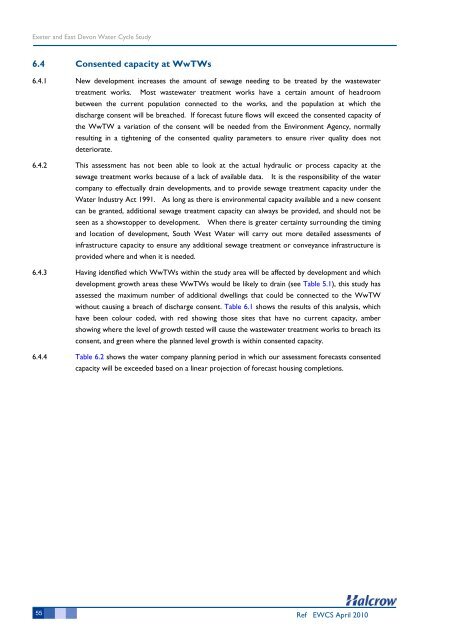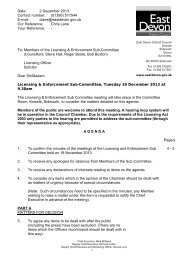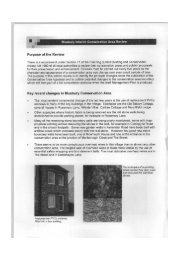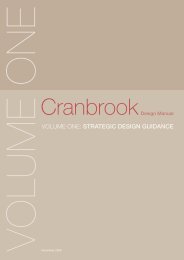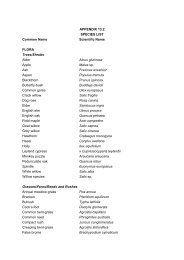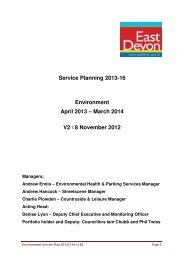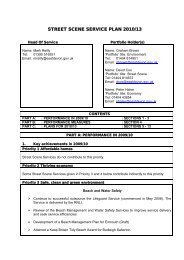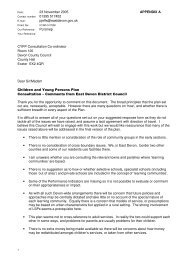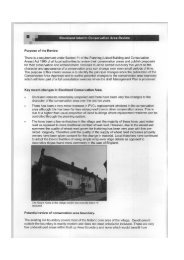Water Cycle Study - East Devon District Council
Water Cycle Study - East Devon District Council
Water Cycle Study - East Devon District Council
You also want an ePaper? Increase the reach of your titles
YUMPU automatically turns print PDFs into web optimized ePapers that Google loves.
Exeter and <strong>East</strong> <strong>Devon</strong> <strong>Water</strong> <strong>Cycle</strong> <strong>Study</strong><br />
6.4 Consented capacity at WwTWs<br />
6.4.1 New development increases the amount of sewage needing to be treated by the wastewater<br />
treatment works. Most wastewater treatment works have a certain amount of headroom<br />
between the current population connected to the works, and the population at which the<br />
discharge consent will be breached. If forecast future flows will exceed the consented capacity of<br />
the WwTW a variation of the consent will be needed from the Environment Agency, normally<br />
resulting in a tightening of the consented quality parameters to ensure river quality does not<br />
deteriorate.<br />
6.4.2 This assessment has not been able to look at the actual hydraulic or process capacity at the<br />
sewage treatment works because of a lack of available data. It is the responsibility of the water<br />
company to effectually drain developments, and to provide sewage treatment capacity under the<br />
<strong>Water</strong> Industry Act 1991. As long as there is environmental capacity available and a new consent<br />
can be granted, additional sewage treatment capacity can always be provided, and should not be<br />
seen as a showstopper to development. When there is greater certainty surrounding the timing<br />
and location of development, South West <strong>Water</strong> will carry out more detailed assessments of<br />
infrastructure capacity to ensure any additional sewage treatment or conveyance infrastructure is<br />
provided where and when it is needed.<br />
6.4.3 Having identified which WwTWs within the study area will be affected by development and which<br />
development growth areas these WwTWs would be likely to drain (see Table 5.1), this study has<br />
assessed the maximum number of additional dwellings that could be connected to the WwTW<br />
without causing a breach of discharge consent. Table 6.1 shows the results of this analysis, which<br />
have been colour coded, with red showing those sites that have no current capacity, amber<br />
showing where the level of growth tested will cause the wastewater treatment works to breach its<br />
consent, and green where the planned level growth is within consented capacity.<br />
6.4.4 Table 6.2 shows the water company planning period in which our assessment forecasts consented<br />
capacity will be exceeded based on a linear projection of forecast housing completions.<br />
55 Ref EWCS April 2010


